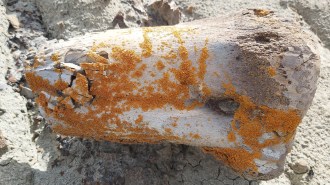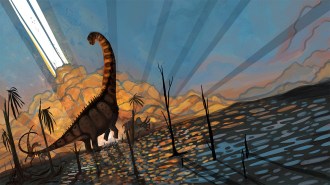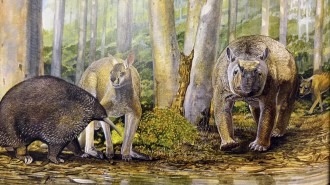Earful of data hints at ancient fish migration
Small growths that developed in the ears of fish more than 65 million years ago are providing a wealth of information about the species’ environment and lifestyle.

The fish, Vorhisia vulpes, lived in a broad, shallow seaway that stretched from present-day Texas to the Arctic Ocean. Scientists know the creature only by its distinctive otoliths, which is Greek for “ear stones.” Those features develop during most stages of a fish’s life and show numerous growth rings, says Scott J. Carpenter, a geochemist at the University of Iowa in Iowa City. The ratios between carbon isotopes and between oxygen isotopes in an otolith layer offer clues about the fish’s environment when that material was deposited, says Carpenter.
He and his colleagues studied four otoliths unearthed in South Dakota and report their findings in the May 1 Nature. The ratio of two oxygen isotopes in each otolith core suggests that V. vulpes grew up in the brackish water of an estuary. Oxygen-isotope variations among otolith layers indicate that the fish set to sea when its otolith length reached 2 to 4 millimeters. The layers outside the core show annual cycles of seasonal temperature changes during each fish’s 3 years’ of life, the researchers contend. The oxygen-isotope data indicate that that the average annual water temperature in the ancient seaway was about 17.6C, says Carpenter.
Variations in carbon-isotope ratios among otolith layers record changes in the creatures’ diet and metabolism during annual migrations at sea. Because the otoliths were found in sediments laid down in an ancient estuary, the team suggests that populations of V. vulpes returned to their home waters to spawn before dying.
****************
If you have a comment on this article that you would like considered for publication in Science News, send it to editors@sciencenews.org. Please include your name and location.







